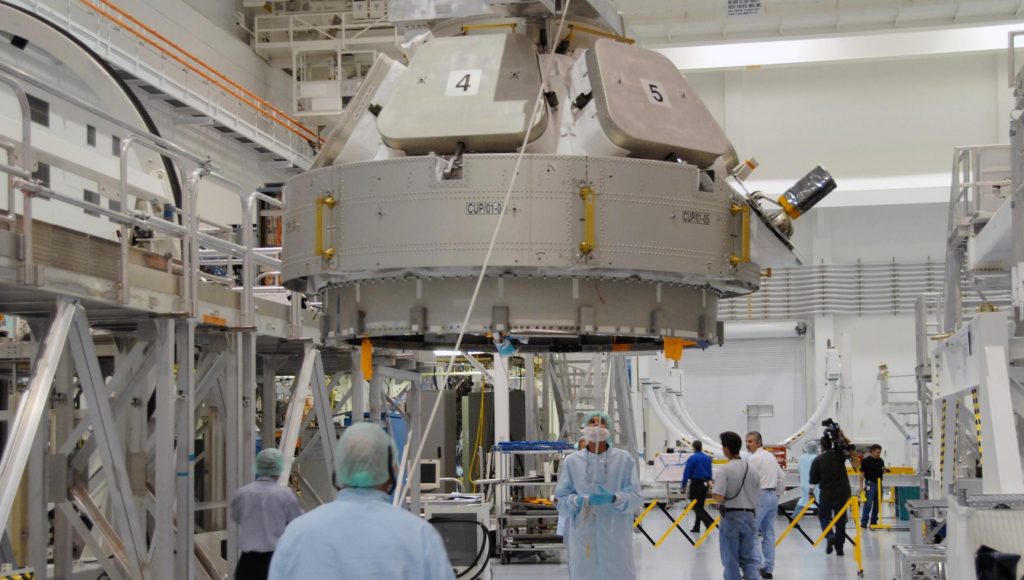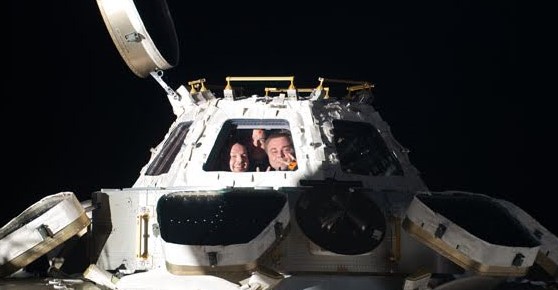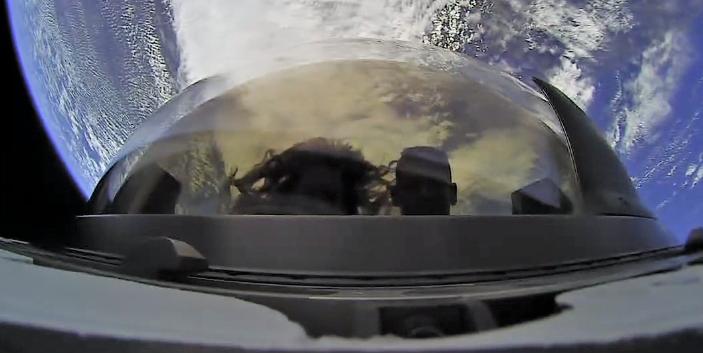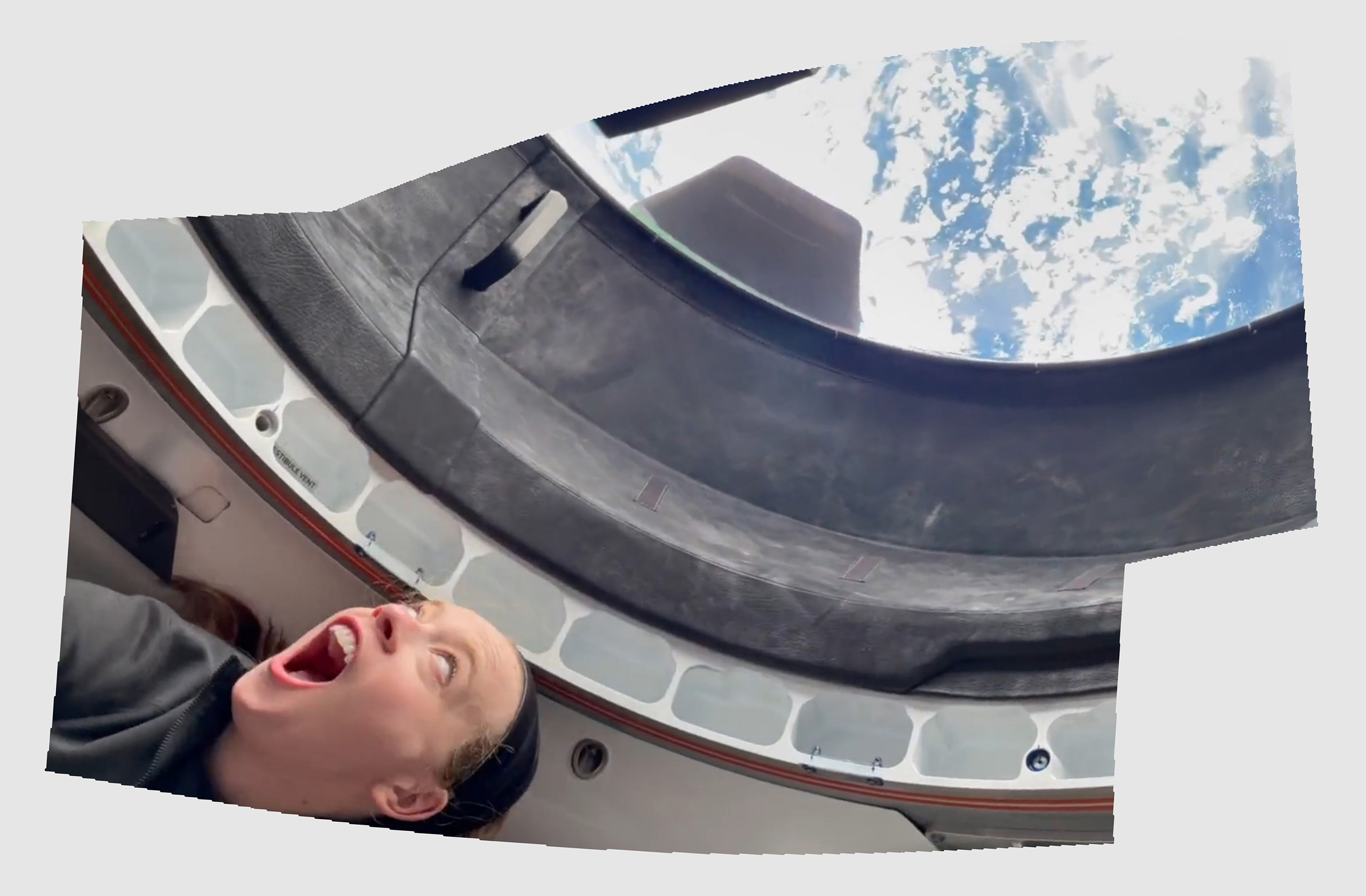
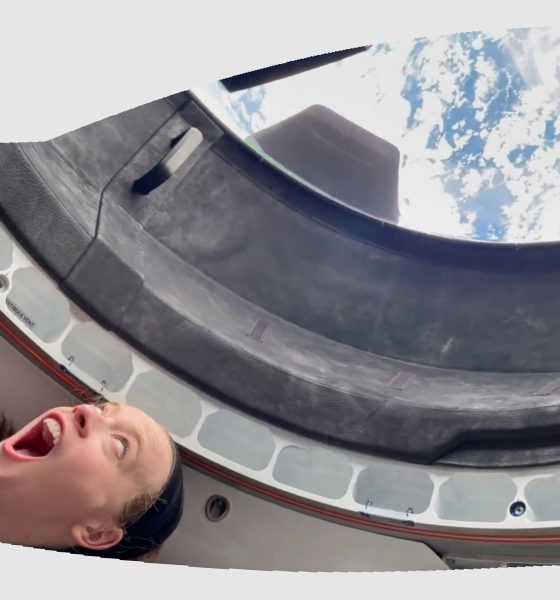
News
SpaceX Inspiration4 astronaut shares behind-the-scenes look at largest space window’s ‘first light’
SpaceX Inspiration4 astronaut Sian Proctor has shared the first behind-the-scenes look at what it was like for the world’s first all-private astronaut crew to witness the largest window ever flown in space for the first time.
In front of the camera: Hayley Arceneaux, now the youngest American astronaut in history and the first person ever to fly in space (or orbit) with an internal prosthetic. The mission: Inspiration4, a philanthropic creation of billionaire and CEO Jared Isaacman heavily focused on raising money (and awareness) for St. Jude’s Children’s Hospital and the fight against childhood cancer. While, as many an internet-goer will be more than eager to point out, Isaacman could have technically donated ~10% – not ~5% – of his net worth and been done with it, he instead decided to commit $100M to St. Jude’s and shepherd the world’s first all-private crewed orbital spaceflight into existence.
Private orbital spaceflight is not unique – seven other paying customers have flown to orbit and back in the 21st century. What Jared conceived of, however, is. Instead of a rather less inspirational mishmash of anyone rich enough to pay ~$20-40M for a seat, Isaacman chose to invite three relatively ordinary people along for the ride and even raffled one of the three ‘tickets’ to any American willing to donate $10 or more to the fight against childhood cancer. A step further, thanks to an excellent and transparent social media presence, millions of people from around the world got to follow the mission’s progress, watch a large portion of it live, and generally be awed by an important step forward for spaceflight and inspired by one of the most simultaneously eclectic and ordinary astronaut crew of all time.
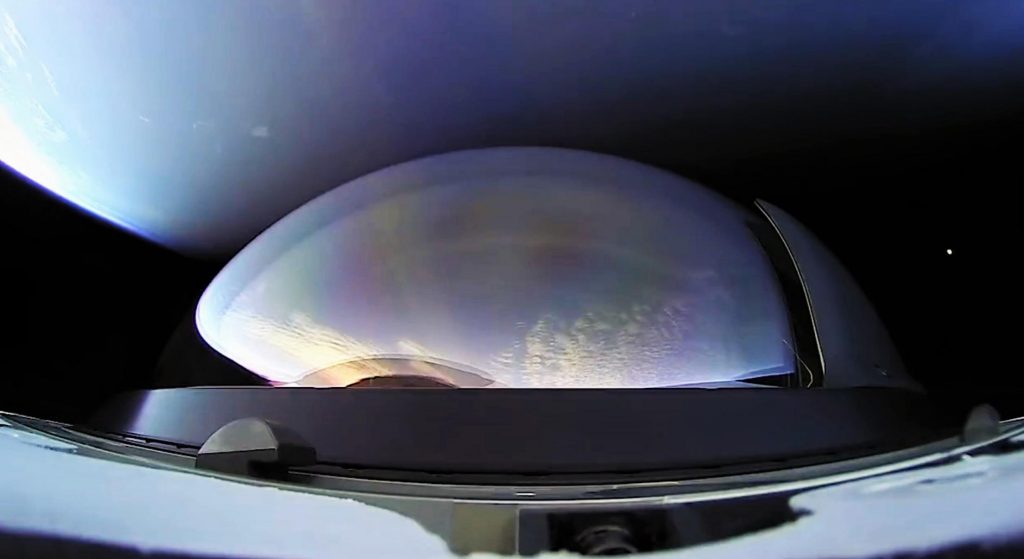
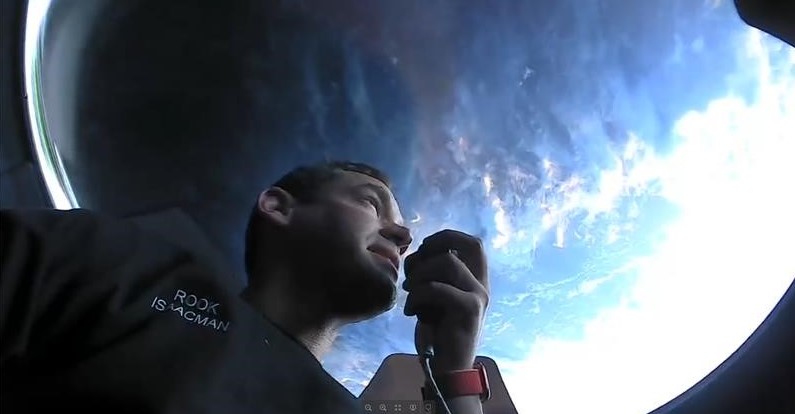
More to the point, millions of people (or at least hundreds of thousands, for now) wouldn’t have gotten to vicariously experience the sheer joy of the first orbital cancer survivor experiencing the largest, most uninterrupted window ever flown in space for the first time. Officially known as the ‘cupola,’ SpaceX conceived of, designed, built, qualified, and flew the massive dome window in less than a year from start to finish.
Measuring around 1.2m (3.9 ft) wide and around 0.8-1m (2.5-3.2 ft) wide on the inside, Inspiration4’s cupola might offer less internal volume than NASA’s decade-old International Space Station cupola, but it makes up for the tighter space with the largest seamless window ever flown in space. Likely made out of several layers of acrylic domes not dissimilar to the ‘bubbles’ one might come across at aquariums, the innermost ‘layer’ of Dragon’s cupola carries an odd brownish hue but the glass (technically plastic) is still almost completely transparent and has no ‘frame’ or interruptions save for where it attaches to the spacecraft itself.
Thankfully, by all appearances, that brownish hue – perhaps some kind of optical coating or a tint to reduce glare – isn’t easily discernable from the inside looking out. Instead, the uninterrupted window practically melts away into a crystal-clear nothing, offering what has to be one of the best views available in space.
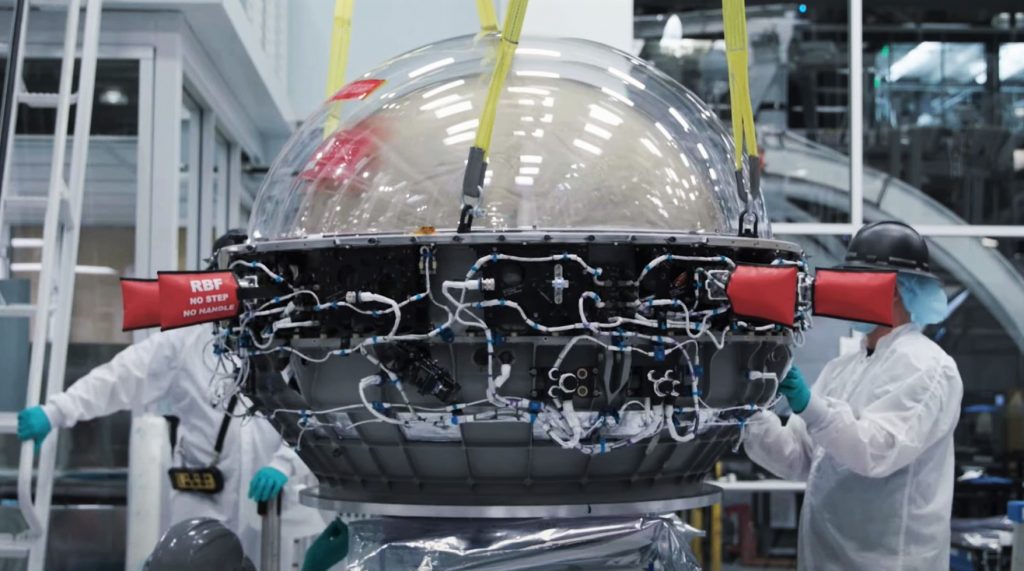
Given that SpaceX reportedly turned Dragon’s cupola from idea to reality in the matter of a single year and for a single customer, it’s difficult to imagine what additional upgrades could be realized on future Dragon spacecraft. Already, a senior SpaceX director says that the company is seriously considering building one or several new Dragons solely for private astronaut launches after receiving a massive uptick in demand for tickets to orbit. Even before Inspiration4 had splashed down, CEO Elon Musk promised that future flights would offer in-flight internet and hot food with the addition of a small oven/heater and a connection to the company’s own Starlink satellite constellation.
If SpaceX were to build an entirely new Dragon just for private free-flyer launches, it could potentially implement significant design changes as long as they didn’t appreciably lower safety. Given that an exclusively free-flying Dragon would never need to worry about docking in orbit, SpaceX might even be able to tweak the nosecone and make the cupola wider and taller. The possibilities may be far from endless but the fact that SpaceX would consider a modification as extreme as the cupola that flew on Inspiration4 in the first place suggests that the company is quite a lot more confident – and more willing to make big changes – than one might have previously guessed.

News
Tesla FSD fleet is nearing 7 billion total miles, including 2.5 billion city miles
As can be seen on Tesla’s official FSD webpage, vehicles equipped with the system have now navigated over 6.99 billion miles.

Tesla’s Full Self-Driving (Supervised) fleet is closing in on almost 7 billion total miles driven, as per data posted by the company on its official FSD webpage.
These figures hint at the massive scale of data fueling Tesla’s rapid FSD improvements, which have been quite notable as of late.
FSD mileage milestones
As can be seen on Tesla’s official FSD webpage, vehicles equipped with the system have now navigated over 6.99 billion miles. Tesla owner and avid FSD tester Whole Mars Catalog also shared a screenshot indicating that from the nearly 7 billion miles traveled by the FSD fleet, more than 2.5 billion miles were driven inside cities.
City miles are particularly valuable for complex urban scenarios like unprotected turns, pedestrian interactions, and traffic lights. This is also the difference-maker for FSD, as only complex solutions, such as Waymo’s self-driving taxis, operate similarly on inner-city streets. And even then, incidents such as the San Francisco blackouts have proven challenging for sensor-rich vehicles like Waymos.
Tesla’s data edge
Tesla has a number of advantages in the autonomous vehicle sector, one of which is the size of its fleet and the number of vehicles training FSD on real-world roads. Tesla’s nearly 7 billion FSD miles then allow the company to roll out updates that make its vehicles behave like they are being driven by experienced drivers, even if they are operating on their own.
So notable are Tesla’s improvements to FSD that NVIDIA Director of Robotics Jim Fan, after experiencing FSD v14, noted that the system is the first AI that passes what he described as a “Physical Turing Test.”
“Despite knowing exactly how robot learning works, I still find it magical watching the steering wheel turn by itself. First it feels surreal, next it becomes routine. Then, like the smartphone, taking it away actively hurts. This is how humanity gets rewired and glued to god-like technologies,” Fan wrote in a post on X.
News
Tesla starts showing how FSD will change lives in Europe
Local officials tested the system on narrow country roads and were impressed by FSD’s smooth, human-like driving, with some calling the service a game-changer for everyday life in areas that are far from urban centers.

Tesla has launched Europe’s first public shuttle service using Full Self-Driving (Supervised) in the rural Eifelkreis Bitburg-Prüm region of Germany, demonstrating how the technology can restore independence and mobility for people who struggle with limited transport options.
Local officials tested the system on narrow country roads and were impressed by FSD’s smooth, human-like driving, with some calling the service a game-changer for everyday life in areas that are far from urban centers.
Officials see real impact on rural residents
Arzfeld Mayor Johannes Kuhl and District Administrator Andreas Kruppert personally tested the Tesla shuttle service. This allowed them to see just how well FSD navigated winding lanes and rural roads confidently. Kruppert said, “Autonomous driving sounds like science fiction to many, but we simply see here that it works totally well in rural regions too.” Kuhl, for his part, also noted that FSD “feels like a very experienced driver.”
The pilot complements the area’s “Citizen Bus” program, which provides on-demand rides for elderly residents who can no longer drive themselves. Tesla Europe shared a video of a demonstration of the service, highlighting how FSD gives people their freedom back, even in places where public transport is not as prevalent.
What the Ministry for Economic Affairs and Transport says
Rhineland-Palatinate’s Minister Daniela Schmitt supported the project, praising the collaboration that made this “first of its kind in Europe” possible. As per the ministry, the rural rollout for the service shows FSD’s potential beyond major cities, and it delivers tangible benefits like grocery runs, doctor visits, and social connections for isolated residents.
“Reliable and flexible mobility is especially vital in rural areas. With the launch of a shuttle service using self-driving vehicles (FSD supervised) by Tesla in the Eifelkreis Bitburg-Prüm, an innovative pilot project is now getting underway that complements local community bus services. It is the first project of its kind in Europe.
“The result is a real gain for rural mobility: greater accessibility, more flexibility and tangible benefits for everyday life. A strong signal for innovation, cooperation and future-oriented mobility beyond urban centers,” the ministry wrote in a LinkedIn post.
News
Tesla China quietly posts Robotaxi-related job listing
Tesla China is currently seeking a Low Voltage Electrical Engineer to work on circuit board design for the company’s autonomous vehicles.

Tesla has posted a new job listing in Shanghai explicitly tied to its Robotaxi program, fueling speculation that the company is preparing to launch its dedicated autonomous ride-hailing service in China.
As noted in the listing, Tesla China is currently seeking a Low Voltage Electrical Engineer to work on circuit board design for the company’s autonomous vehicles.
Robotaxi-specific role
The listing, which was shared on social media platform X by industry watcher @tslaming, suggested that Tesla China is looking to fill the role urgently. The job listing itself specifically mentions that the person hired for the role will be working on the Low Voltage Hardware team, which would design the circuit boards that would serve as the nervous system of the Robotaxi.
Key tasks for the role, as indicated in the job listing, include collaboration with PCB layout, firmware, mechanical, program management, and validation teams, among other responsibilities. The role is based in Shanghai.
China Robotaxi launch
China represents a massive potential market for robotaxis, with its dense urban centers and supportive policies in select cities. Tesla has limited permission to roll out FSD in the country, though despite this, its vehicles have been hailed as among the best in the market when it comes to autonomous features. So far, at least, it appears that China supports Tesla’s FSD and Robotaxi rollout.
This was hinted at in November, when Tesla brought the Cybercab to the 8th China International Import Expo (CIIE) in Shanghai, marking the first time that the autonomous two-seater was brought to the Asia-Pacific region. The vehicle, despite not having a release date in China, received a significant amount of interest among the event’s attendees.
